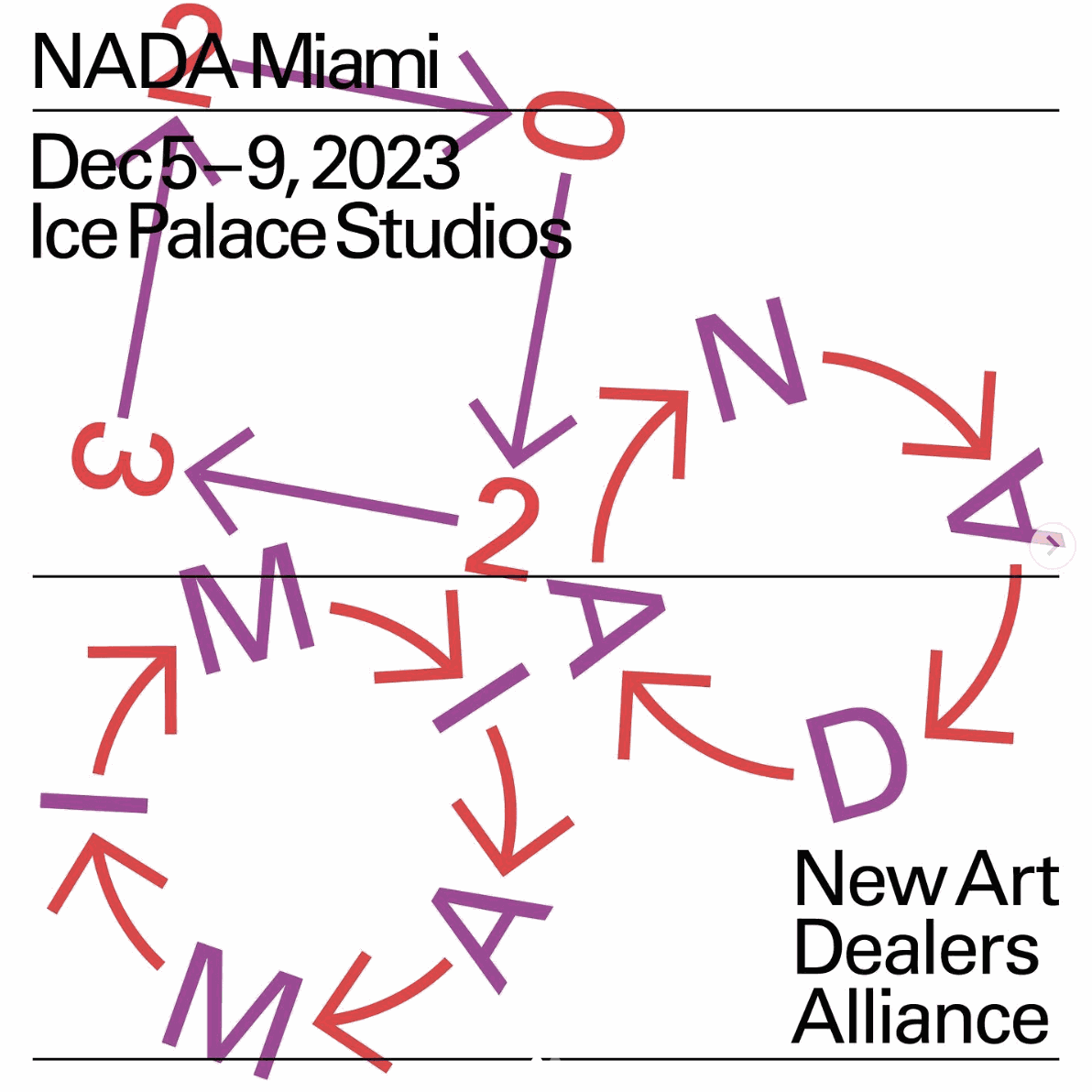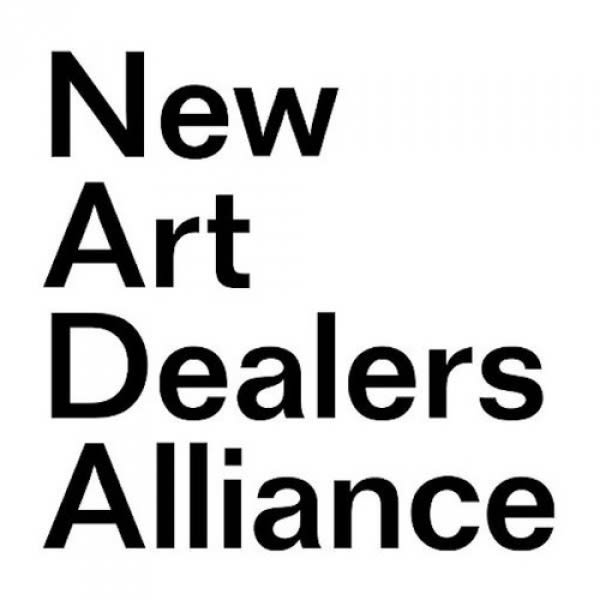Goldfinch Presents: Azadeh Gholizadeh at NADA Miami 2023
Goldfinch is proud to present a solo booth of works by Iranian artist Azadeh Gholizadeh (she/her), whose needlepoint tapestries explore and draw upon ideas about light, time, color and memory; Modern architecture and modernist grids; digital versus analog perspectives; the history of women-centric fiber art techniques; and the design of Persian manuscripts such as the Shah Nama, and Persian gardens and mosques. Through these tapestries, Gholizadeh imagines alternative ways of situating marginalized bodies and queered perspectives within shifting landscapes, while also depicting the fragmentation of memory that occurs when the place(s) where one has formed their core identity, their “homeland” (be it literal or metaphorical), have become inaccessible.
Gholizadeh’s needlepoint tapestries and sculptural installations insist that landscapes, pictorial notions of perspective, and hand weaving and embroidery practices are all carriers of subjective emotional meaning. The tapestries, which typically follow a basic square or rectangular format, are inspired by Gholizadeh’s experiences looking out at present-day views that may simultaneously spur memories of her past life, and current family, in Tehran, Iran, combined with observations derived from Gholizadeh’s present locale(s).
Gholizadeh’s process begins by making a collage out of two or more photographic images so as to combine different viewpoints and depths into a single plane. Then, based on the structure of lines and patterns in the collage study, as well as inspiration she may draw from, for example, Islamic geometric patterns found in the Persian gardens and mosques she studied as an architect in Iran, Gholizadeh uses yarn, felt and painted canvas mesh to create ambitious tapestries, staying within a framework of horizontal and vertical lines so that the final imagery may appear pixelated. “This is how I reflect on the idea of home,” Gholizadeh explains. ”[It is something that is] fragile, inconsistent, and perspectival.”
Trees are a recurring motif in Gholizadeh’s recent works. “I like looking at trees to explore how absence and distance, desire and a longing for that which is absent can become a form of endurance,” and pain can be transformed into a conversation between past and present. “I use elements from nature such as clouds, mountain peaks, forests, and leaves because they give me comfort and a sense of refuge. They resonate because one or more components awaken some of my memories, and when all are combined, (they) create a new view.” In this way, Gholizadeh says, she seeks to portray the relationship of landscape to memory in a manner described by Simon Schama as “a way of rediscovering what we already have … instead of being yet another explanation of what we have lost, it is an exploration of what we may find.”
Azadeh Gholizadeh was born in Tehran, Iran. She received an MFA from the School of the Art Institute of Chicago in 2012; a Masters of Architecture and Urbanism from Iran University of Science and Technology in Tehran, Iran in 2009; and a Bachelor of Architecture from the School of Architecture and Urban Planning at Shahid Beheshti University in Tehran, Iran in 2006.
In 2022, Gholizadeh was a Chicago Artadia Awardee and a winner of the Hopper Prize. In 2021, Gholizadeh was a finalist for the Hopper Prize, and was a finalist for the Chicago Artadia Award in 2020. In 2017, Gholizadeh was the recipient of a Brenda Green Gender Inclusivity Scholarship for participation in the ACRE Residency program.
Solo exhibitions of Gholizadeh’s work include Dawn to Dusk at Goldfinch in Chicago; Oh, Swallow where do you live in Winter? at Apparatus Projects in Chicago; and Within the Threshold at the Chicago Artist Coalition in Chicago. Two- and three-person exhibitions of her work include Artadia’s EXPO Chicago booth presentation in April 2023 (with Selva Aparicio and Maryam Taghavi); Phonetic Fragments: Azadeh Gholizadeh & Elnaz Javani at Roots and Culture in 2022, and Line: Diana Gabriel and Azadeh Gholizadeh at the Riverside Art Center in Riverside, Illinois, in 2021.
Group exhibitions include Ten x Ten at Homeroom in Collaboration with Chicago Composers Orchestra in Chicago, Illinois; Between Land and Sky, curated by Nazafarin Lotfi for Everybody Gallery in Chicago, Illinois; Outliers, curated by Ambereen Karamat and Lee Ann Norman at the Franklin in Chicago, Illinois; Transistors, curated by Ariel Gentalen at Ralph Arnold Gallery in Chicago, Illinois; After Junkspace at Gaylord & Dorothy Donnelley Foundation in Chicago, Illinois; This is the place, curated by Elizabeth Lalley at ACRE in Chicago, Illinois; Artificial Life, curated by Meg Noe at the Chicago Artist Coalition in Chicago, Illinois; Reproducibles at Museo de Arte de Armenia in Armenia, Colombia; and Reproducibles at Espacio El Dorado of Bogota in Bogota, Colombia.


